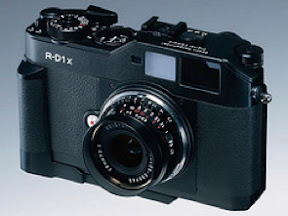 Epson originally introduced the R-D1 digital rangefinder in 2006. The camera met with lukewarm reception despite the advances. After Leica introduced the M8 did the much less expensive R-D1 really start to get popular. Now, three years after the original, Epson has reintroduced this uber-retro digital with the R-D1xG.
Sporting such new features as SDHC support (up to 32GB), a 2.5“ 23 million pixel LED lit rear display, and RAW+JPEG support, the camera retains the analog features (and quirks) that endeared it to the rangefinder crowd.
Epson originally introduced the R-D1 digital rangefinder in 2006. The camera met with lukewarm reception despite the advances. After Leica introduced the M8 did the much less expensive R-D1 really start to get popular. Now, three years after the original, Epson has reintroduced this uber-retro digital with the R-D1xG.
Sporting such new features as SDHC support (up to 32GB), a 2.5“ 23 million pixel LED lit rear display, and RAW+JPEG support, the camera retains the analog features (and quirks) that endeared it to the rangefinder crowd.


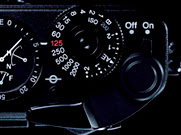 Fully compatible with all M-mount lenses (and Leica Thread Mount via adapter) gives the R-D1xG over 200 lenses to choose from.
Manufactured by Cosina for Epson, the camera is expected to ship on 4/9/2009 in Japan. Expected price is ¥299,000 (around $3000 USD).
Fully compatible with all M-mount lenses (and Leica Thread Mount via adapter) gives the R-D1xG over 200 lenses to choose from.
Manufactured by Cosina for Epson, the camera is expected to ship on 4/9/2009 in Japan. Expected price is ¥299,000 (around $3000 USD).
Saturday, February 28, 2009
Epson Reintroduces the R-D1 Digital Rangefinder
Posted by
Carlos Echenique
at
3:06 PM
View Comments
![]()
![]()
Tuesday, February 24, 2009
PAW Update
I have been dragging my feet posting updates to my Picture A Week (PAW) project. I have been taking photos and posting them, I just keep forgetting to publish here. So here is a recap of PAWs 4-8.
PAW #4
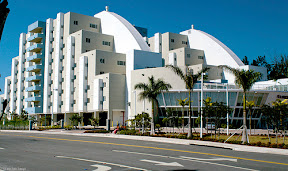 This is a six shot stitch using my Hartblei 45mm Super Rotator lens. Useful for perspective control and architectural photography.
PAW #5
This is a six shot stitch using my Hartblei 45mm Super Rotator lens. Useful for perspective control and architectural photography.
PAW #5
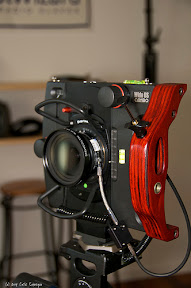 This is a shot of the Cambo Wide DS Technical Camera. Technical cameras are used for architecture and landscapes but the shift mechanism is incorporated into the body of the camera, not the lens. These cameras typically use medium format analog and digital backs.
PAW #6
This is a shot of the Cambo Wide DS Technical Camera. Technical cameras are used for architecture and landscapes but the shift mechanism is incorporated into the body of the camera, not the lens. These cameras typically use medium format analog and digital backs.
PAW #6
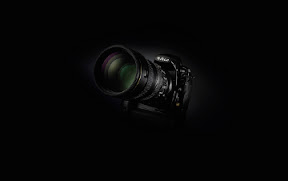 OK, this week I was hard up for a good photo, so I whipped up this wallpaper using some stock imagery from the Nikon press site.
PAW #7
OK, this week I was hard up for a good photo, so I whipped up this wallpaper using some stock imagery from the Nikon press site.
PAW #7
 Three Faces of Mel - my first attempt at a “multiplicity portrait”. Based on the work of Natalie “Miss Aniela” Dybisz.
PAW #8
Three Faces of Mel - my first attempt at a “multiplicity portrait”. Based on the work of Natalie “Miss Aniela” Dybisz.
PAW #8
 Study Hall - second attempt at multiplicity portraiture. Came out a bit better than the first one.
and now announcing
PAW #9
Study Hall - second attempt at multiplicity portraiture. Came out a bit better than the first one.
and now announcing
PAW #9
 The Corsican Knight 2 - from the 2009 Florida Renaissance Festival.
The Corsican Knight 2 - from the 2009 Florida Renaissance Festival.
Posted by
Carlos Echenique
at
9:49 PM
View Comments
![]()
![]()
Sunday, February 15, 2009
Voigtlander COLOR SKOPAR 20mm F3.5 SL II Aspherical (for Nikon Ai-s) announced
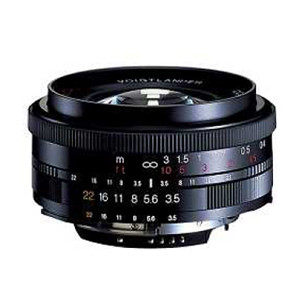 Mapcamera.com (translation here) has posted a news bit about a new Voigtlander SL II lens for Nikon and Pentax.
Mapcamera.com (translation here) has posted a news bit about a new Voigtlander SL II lens for Nikon and Pentax.
The Voigtlander COLOR SKOPAR 20mm F3.5 SL II Aspherical (for Nikon Ai-s) has the following specs:
- Expected Release Date: 2009 February 28
- Focal length: 20mm
- Angle: 94 degrees
- Relative aperture: 1:3.5
- This lens: minimum aperture 6 of 9 pieces: F22
- Minimum focusing distance: 0.2m
- Number of diaphragm blades: 9 piece weight: 205g
- Maximum Overall Length × diameter: 63 × 28.8mm
- Filter size: 52mm
- Mounting: Ai-s (CPU-Chip)
- Other: Hood (optional) Round threaded
The price will be announced on the day of release.
I contacted Stephen Gandy of Cameraquest.com (Authorized US distributor of CV lenses and cameras) and he is taking pre-orders via Paypal now through March 1, 2009. To place a pre-order send $100 USD (refundable) to Stephen@CameraQuest.com and state that this is a reservation for this lens is the details section.
Posted by
Carlos Echenique
at
12:46 PM
View Comments
![]()
![]()
Wednesday, February 11, 2009
Building a ZFS based home storage server – Part 1
I’ve been reading up on building my own storage server to meet my needs as a photographer. I have tested pre-built NAS devices (Infrant/Netgear 1000S), servers with shared storage, and Windows Home Server (wrinkles and all). HP has promised me one of their new MediaSmart Servers and I plan to do some interesting things with it, but what I really need is a solution to safely store all of my photos and provide me with a nice networked Time Machine target. I am also keen to keep the costs down as much as possible.
First up, big thanks to guys over at zpool.org for cluing me in to
 this nice little Chenbro chassis. The ES34069 is a mini-ITX form factor chassis that looks perfect for the job. Sporting 4 hot swap SATA drive bays plus an internal drive bay, this little fellow will fit the bill nicely, assuming I find a mini-ITX mobo worthy to the task. I found this chassis available online at SpectrumServers.com for $197.
this nice little Chenbro chassis. The ES34069 is a mini-ITX form factor chassis that looks perfect for the job. Sporting 4 hot swap SATA drive bays plus an internal drive bay, this little fellow will fit the bill nicely, assuming I find a mini-ITX mobo worthy to the task. I found this chassis available online at SpectrumServers.com for $197.
Next was finding a mobo. Mini-ITX is an embedded form factor designed for appliances and industrial computing applications. Most tend to lean towards the lower-end, lower voltage processors but I was looking for one capable of handling a Q6600 CPU. As luck would have it, Intel provided a solution in the form of the DQ45EK desktop board. Sporting a Socket 775, 2 DDR2 RAM slots, and Core2Quad enabled, this little wonder fits the bill. I found this board at TheNerds.net for $143.99.
tend to lean towards the lower-end, lower voltage processors but I was looking for one capable of handling a Q6600 CPU. As luck would have it, Intel provided a solution in the form of the DQ45EK desktop board. Sporting a Socket 775, 2 DDR2 RAM slots, and Core2Quad enabled, this little wonder fits the bill. I found this board at TheNerds.net for $143.99.
As mentioned, I want to install an Intel Q6600 quad core CPU in this system and I happen to have 2GB of Dominator DDR2 RAM lying about.
For my OS choice, I decided to try NexentaCore OS which is based on OpenSolaris and sports a lot of features for storage servers not the least of which is the Zetta File System (ZFS).
So here is a table of the parts in the queue for this project:
| Item | Cost |
| Chenbro ES34069 Chassis | $197.00 |
| Intel DQ45EK Mini-ITX mobo | $143.99 |
| Intel Q6600 CPU | $199.00 |
| 2GB Corsair Dominator DDR2 | free |
| NexentaCore 2.0 Beta 1 OS | free |
| Sub Total | $539.99 |
In the next installment, I will look at the drives and possibly a SATA controller to handle them all. Plus, if my budget allows, I will use a SSD to house the operating system and the storage caches to improve the speed and durability of the system.
Posted by
Carlos Echenique
at
2:50 PM
View Comments
![]()
![]()
Monday, February 2, 2009
A Morning with Capture Integration
About two months ago, I visited the Miami Beach offices of Capture Integration, the premier Phase One dealer in the US. I was on a quest for information. Taking the long view on my plans for growth as a photographer, and spurred on by my cohorts over at the GetDPI Forums, I decided to learn more about the world of medium format digital photography. I had posted before about medium format digital, but I had never actually gotten some "hands on" time with the gear.

During the walkabout, I was able to capture a variety of images using the harem of lenses that Doug lugged around with us. (Medium format camera gear is a bit larger and heavier than 35mm, so remember to factor that into your buying decision.) Another feature of this format is that the sensor lacks an antialiasing filter, often found on DSLR's, which adds to the overall sharpness of the back. Top that off with a body system that is completely modular and you actually have a growth path that does not involve selling off your entire camera kit in order to upgrade.
Pros
- Modular system allows for easy upgradeability.
- Unmatched for color, resolution, and detail.
- Firmware updates can expand ISO ranges and add many new features.
- Long term support from the company.
- Equipment holds a lot of it's value (for now).
All is not beer and skittles however, there are some limitations to this wundercamera format:
Cons
- Most medium format digital backs cannot match the ISO range and frame rates of 35mm DSLRs. 70 frames per minute is considered fast.
- The autofocus system in the bodies is primitive by DSLR standards. Sports cameras, these are not.
- Expensive - a modern digital back can cost as much as a BMW. In fact, Phase One currently has a promotion (through the end of Q1 '09): buy a Phase One digital back (P30+ or P45+) and get the camera body and up to 5 lenses free! That's a $17,500 value right there.
- Firmware cannot be updated in the field. Requires back be sent to Phase One for updating.
Lunch with Chris

Technical cameras are scale focus rangefinders that use large format lenses on medium format backs. These cameras are very simple in design, having almost no electronics involved in taking a photo (digital ready technical lenses have a connector that sends a signal to the digital back syncing it to the shot) beyond the digital back itself.
Some models include tilt/shift movements (either via sliding plates or a bellows arrangement) to take advantage of the very large image circle produced by the large format lens used. These movements allow for the easy creation of stitched panoramas and to shoot perspective corrected photos.
Why not use a perspective correcting lens on the Phase One camera? You can, but you won't get the same range of tilt/shifts that you will get with this dedicated solution.
Who would be daft enough to use this throwback? Landscape and architectural photographers. Don Libby of Ironcreek Photography recently switched to the Cambo Wide RS-1000, the smaller sibling of the Wide DS shown here, and while he is still getting used to the system, he has managed to produce some absolutely stunning images during his recent trip to the Redwood forests of California. I highly recommend you check out his website.
If you want to check out the photos I took on my first CI visit, head over to my flickr gallery and check them out. Please feel free to leave comments. Links to the various companies mentioned in the article are sprinkled liberally throughout.
Posted by
Carlos Echenique
at
2:56 AM
View Comments
![]()
![]()






